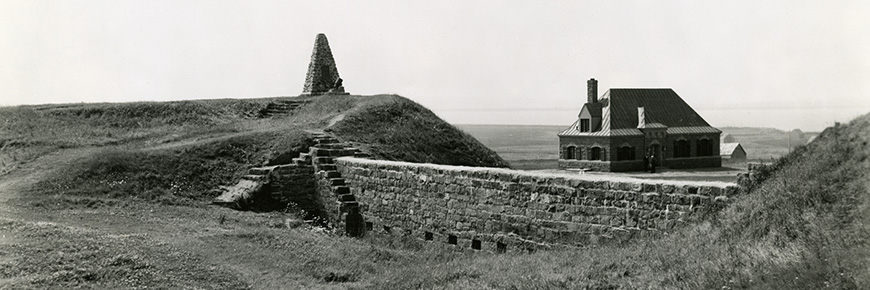
CEAAC Collection - Université de Moncton
Creation of the national historic site
Fort Beauséjour – Fort Cumberland National Historic Site
In 1919, the Historic Sites and Monuments Board of Canada recommended that the ruins of Fort Cumberland be preserved, given their historic significance. An area of 59 acres was designated as a national historic site by the government in 1920. The original name, Beauséjour, was used and the area became one of the first historic sites in Canada.
Dr. Webster
Dr. John Clarence Webster was the first person to bring the historical significance of the Beauséjour-Cumberland region to the attention of the public and government officials. He was a surgeon and gynecologist of international renown who, after his retirement in 1919, lived in Shediac, his native town.
He devoted considerable energy to the identification and restoration of various historic sites in the Maritimes, including the fort at Beauséjour, the habitation at Port-Royal and the fortress at Louisbourg. He also founded the New Brunswick Museum in Saint John. Dr. Webster wrote numerous historical works on the Maritimes and was a member of the Historic Sites and Monuments Board from 1923 until his death in 1950. He became chairman of the Board in 1944.
Preserving the past
The Museum at Fort Beauséjour - Fort Cumberland was officially opened in 1936. The Webster wing, housing hundreds of artefacts collected by Dr. Webster in both New Brunswick and Nova Scotia, was opened in 1949.
Next part: Archaeological digsRelated links
- Long before the Fort: Acadian settlement
- First warfare
- Zone of contention, place of growth
- The construction of a fort at Beauséjour
- Life inside the Fort during the French regime
- The Acadians and the fort
- Tensions of the 1750s
- The siege of 1755
- The deportation of the Acadians
- The start of the British occupation
- Settlers from Yorkshire
- The 1776 siege of Fort Cumberland
- Changes to the fort after the second siege
- Archeological digs
- Date modified :